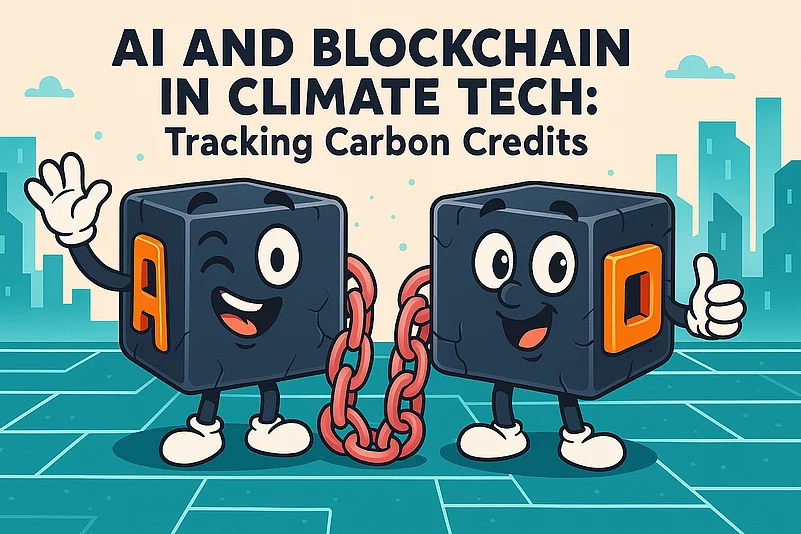The Race to Decarbonize Just Got Smarter
With the escalating climate crisis has come increasing worldwide effort to lessen its impacts. Among many things that have been done to cope with this situation, the invocation of carbon credits has become a tool that assists an organization to offset its emissions by investing in eco-positive projects—for instance, reforestation, renewable energy, or carbon capture.
However, despite their good intentions, carbon markets have long been grappling with problems of trust, transparency, and verification. In a time when carbon-neutral status has become a matter of compulsion, technology has come in to take care of that—unless we are to say that carbon-neutral certificates are just good with fuzzy propaganda, in which case, they will have to show that they are able to walk the talk in real, measurable terms.
Credibility Issues in Carbon Credits
In spite of original intentions, the carbon offset market has become clouded in opacity: questions still linger. Were the offsets real, permanent, or already counted elsewhere? Although many projects claim environmental benefits, verification mechanisms tend to be slow, expensive, and not always equivalent.
Traditional auditing processes are dependent on costly manual monitoring and outdated documentation, inefficient and sometimes even greenwashing. To scale up the climate fight appropriately, it needs systems that are tamper-proof, scalable, and real-time.
How Blockchain Builds an Immutable Record
Essentially, a blockchain works like a digital ledger, one that is secure, transparent, and decentralized. The technology guarantees that all steps in the life cycle of a carbon credit—issuance, transfer, and retirement—are recorded in such a way that no individual outside of the consensus of network participants could alter any record. Such integrity is fundamental to preventing double counting, improper reporting, or fraudulent claims.
Consider a verified tree-planting activity somewhere within the Amazon. Every hectare reforested, every ton of carbon captured, and every credit generated can be recorded on the blockchain. Once entered into the ledger, the data gains entry into a transparent ecosystem from which all stakeholders—project developers, regulators, and buyers—are granted unhindered access to real-time information. This cuts reliance on third parties and builds trust into the system itself.
Smart contracts, another outcome of blockchain, are automated protocols that trigger transactions when defined parameters are met. These make carbon credit issuance and trading faster and more cost-effective by eliminating human errors.
AI Behind Carbon Verification: The Brain
Whereas the blockchain builds the trust infrastructure, artificial intelligence brings the analytical firepower. One of AI's significant contributions to climate tech is monitoring and verifying how these carbon credit projects affect the environment. From satellite imagery to IoT sensor data, artificial intelligence algorithms can process mountains worth of information to analyze forest health, estimate biomass, track emissions reductions, and so much more—and all that much more accurately and frequently than doing manual inspections.
For instance, machine learning models may identify patterns of deforestation or estimate the carbon absorption of a mangrove restoration site. Future results could be updated continually and would ultimately be linked to the blockchain so that the data underlying every credit remains fresh and verifiable.
The application of AI augurs well for improved forecasting. It may model future carbon offsets while taking into account parameters such as weather, soil quality, and human interventions. Such predictive ability is immensely helpful to both investors and policymakers that need to understand how climate projects would impact the long term.
Digital Trust: Building an Environmentally Integrated Infrastructure
The union between AI and blockchain is not only hype technology. Together, they build a new architecture for climate action—an architecture of transparency and automation in the replacement of uncertainty and bureaucracy—with which governments and regulators can take advantage of real-time dashboards of national emissions reductions and offset activities.
For corporations, it provides auditable proof of sustainability claims. It opens up new sites for project developers outside of global markets associated with excessive red tape. Most importantly, it empowers citizens. With the new trust between these technologies, every individual can track a carbon credit—from the project that produced it to the moment it라이브 바카라 retired—which promises that every dollar spent is guaranteed to have real climate benefits.
Challenges on the Road Ahead
Surely, the trend of change has its own share of friction. Data standardization continues to be a challenge; many environmental datasets are highly fragmented, outdated, or incompatible. Interoperability of multiple platforms is also important—new blockchain systems shall not just create more silos but instead communicate with each other to some extent.
Moreover, the questions of governance and accountability are still in transition. Who certifies the AI models? Who certifies the certifiers? Finally, how do we guarantee that the marginal communities—generally the stewards of nature—actively benefit from this digital transition?
As we digitize the planet라이브 바카라 most precious resources, inclusivity must be at the center of every decision.
Markets to Movements: The Future
What we are witnessing is a change in not just tools but also mindsets. Climate action is more about dynamic performance and less about static compliance. The paradigm no longer is to buy credits and forget. It is about engaging actively—tracking impact, learning from data, and adjusting in real time.
While AI and blockchain are not panaceas, they provide a sturdy platform for developing a more accountable, scalable, and equitable carbon market. They help in transmuting intentions to actions, then from actions to impacts. As these technologies develop and converge, they will propel the climate economy from the margins of finance into its very center—where every credit counts and every ton of carbon truly matters.














